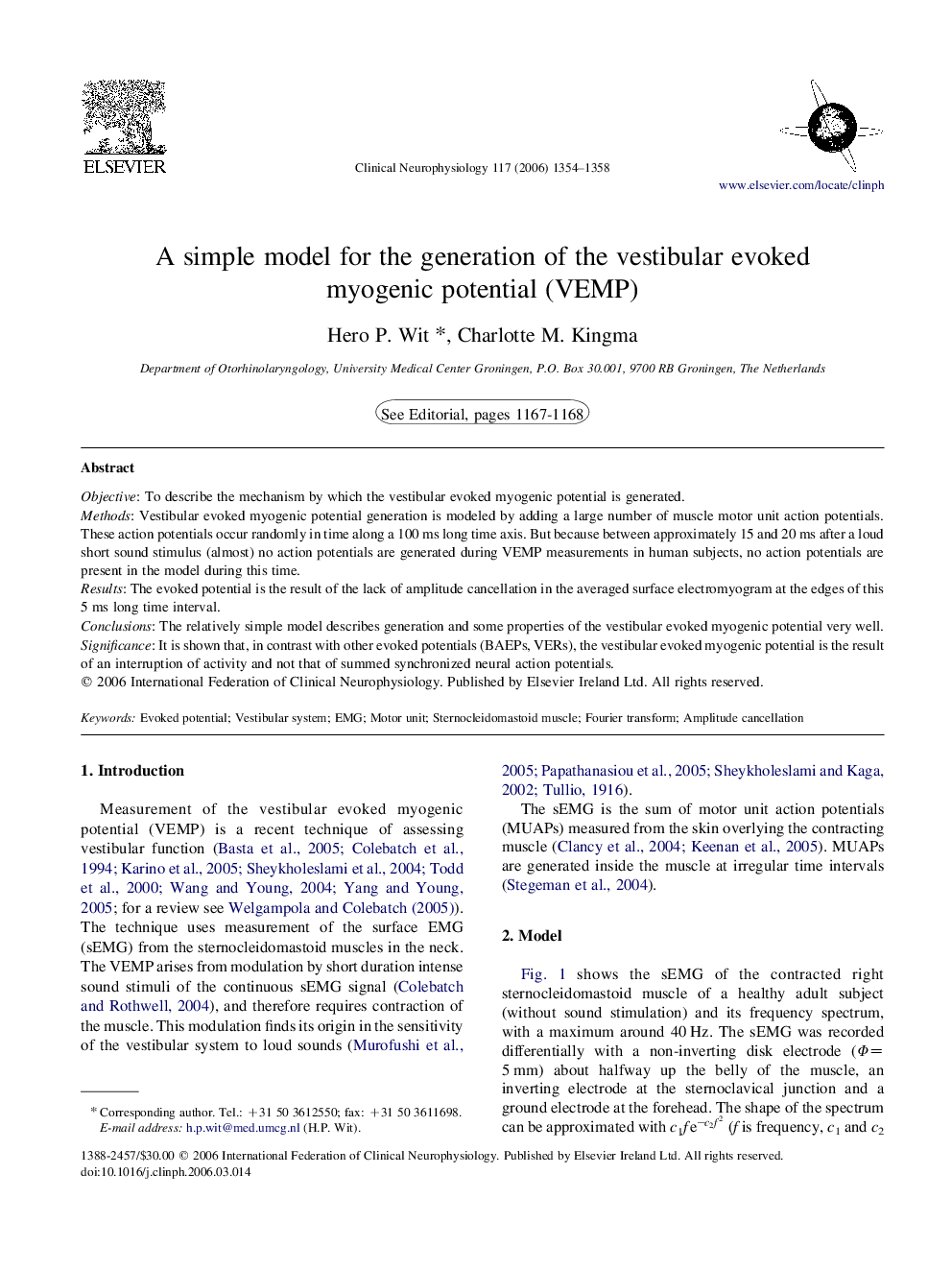| Article ID | Journal | Published Year | Pages | File Type |
|---|---|---|---|---|
| 3048744 | Clinical Neurophysiology | 2006 | 5 Pages |
ObjectiveTo describe the mechanism by which the vestibular evoked myogenic potential is generated.MethodsVestibular evoked myogenic potential generation is modeled by adding a large number of muscle motor unit action potentials. These action potentials occur randomly in time along a 100 ms long time axis. But because between approximately 15 and 20 ms after a loud short sound stimulus (almost) no action potentials are generated during VEMP measurements in human subjects, no action potentials are present in the model during this time.ResultsThe evoked potential is the result of the lack of amplitude cancellation in the averaged surface electromyogram at the edges of this 5 ms long time interval.ConclusionsThe relatively simple model describes generation and some properties of the vestibular evoked myogenic potential very well.SignificanceIt is shown that, in contrast with other evoked potentials (BAEPs, VERs), the vestibular evoked myogenic potential is the result of an interruption of activity and not that of summed synchronized neural action potentials.
